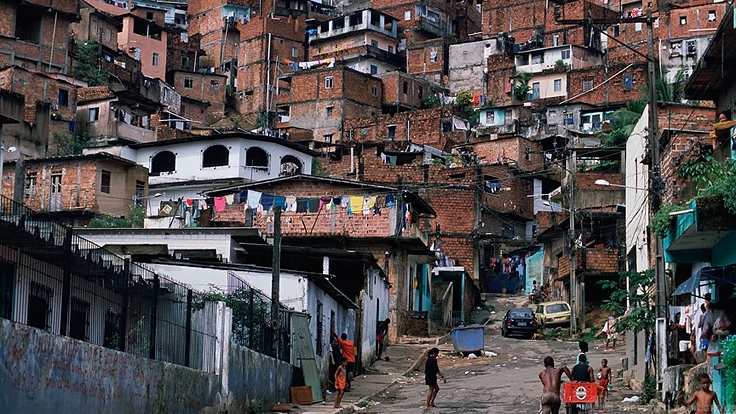Challenge
The world’s urban population is expected to double in 30 years (2000-2030), adding 2 billion more people. Built-up urban areas will increase by 1.2 million square kilometers, nearly tripling the global urban land area in 2000. Most of this growth is happening in developing country cities, which are challenged by the need to meet increasing demand for basic services, infrastructure, jobs, land, and affordable housing, particularly for the nearly one billion urban poor who often live in informal settlements, to enable more inclusive development while preventing some of the negative impacts of rapid expansion.
More than 80 % of global GDP is generated in cities. If managed well, urbanization can promote sustainable growth by increasing productivity, allowing innovation and new ideas to emerge, saving energy, land and natural resources.
Cities consume about 2/3 of the world’s energy, and account for about 70% of global greenhouse gas emissions. Cities are both direct contributors to our growing climate challenge and a necessary part of any solution. As cities develop, their exposure to disaster risk also increases. Almost half a billion urban residents live in coastal areas, increasing their vulnerability to storm surges and sea level rise. Other shocks and stresses to urban systems, including economic downturns, crime, public health epidemics or social upheaval can impact a city’s ability to meet the most basic needs of its citizens, and reverse decades of economic development gains especially in small, fragile states.
Building cities that “work” – green, inclusive, resilient and competitive, supported by strong city systems and governance – requires intensive policy coordination and investment choices, and lies at the core of the World Bank’s work. To improve understanding of the challenges and opportunities of rapid urbanization in developing countries, the Bank has led efforts to consolidate a programmatic approach.
Infrastructure and policy decisions made today will lock cities into urban development patterns for decades to come. The Bank aims to utilize this “window of opportunity” to make sure urbanization spurs sustainable growth, delivering affordable and reliable basic services, housing, transportation and jobs, and improving quality of life for all, especially the poor and vulnerable.
Solution.
The World Bank’s urban strategy focuses on equipping city leaders with strong systems to enable urban growth to contribute to poverty reduction and shared prosperity. The Bank completed “Planning, connecting, and financing cities-now : priorities for city leaders” in January 2013 to provide mechanisms to plan, connect and finance cities, supporting the Bank’s urban agenda which is structured around five key business lines:
- Green cities: providing technical and financial expertise to help cities plan for low-carbon, climate resilient growth and access the necessary financing, improve solid waste management systems, and address pollution and livability challenges.
- Inclusive cities: improving access to land, affordable housing, jobs and basic services, economic opportunities and scaling up efforts to upgrade slums, enhance community participation, and tackle urban poverty and social exclusion.
- Resilient cities: strengthening cities’ multi-dimensional resilience and ability to cope with shocks and better manage climate risk, disaster risk, economic shocks and social conflict.
- Competitive cities + urbanization and growth: helping cities attract investment and jobs by improving land markets, connectivity and regulation at the sub-national level, create an enabling environment for business, and better leverage land and real estate assets.
- Strong city systems and urban governance: supporting the urban agenda through strengthening land and housing markets, enhancing municipal finances and service delivery, and increasing the capacity to carry out integrated territorial development policies and land use planning.
Results
Projects achieved with International Bank for Reconstruction and Development (IBRD) and International Development Association (IDA) support green, inclusive, resilient and competitive cities across the world, reflecting needs in cities at various stages of urban development.
Green Cities: In Morocco, the Solid Waste Development Policy Loan Program (a series of loans in 2009, 2011 and 2003 for US$133 million, US$139 million and US$130 million respectively) helped transform the country’s solid waste sector by emphasizing broader social, environmental and economic sustainability in addition to cleanliness in cities. A novel project which aims to improve municipal solid waste management through development policy operations, the project incentivizes municipalities to establish modern and integrated systems. As a result, more than 75 % of the urban population has access to upgraded waste collection services provided by private operators, compared to 40 percent in 2006; and more than 30 % of collected waste is now disposed of in sanitary landfills compared to less than 5 % in 2006. The DPL also improved the accountability of service providers in the solid waste sector through progressive introduction of rigorous social accountability tools such as Citizens Report Cards; ensuring that public service contracts are posted online; and institutionalizing the right of citizens to access environmental information including those related to municipal solid waste services.
